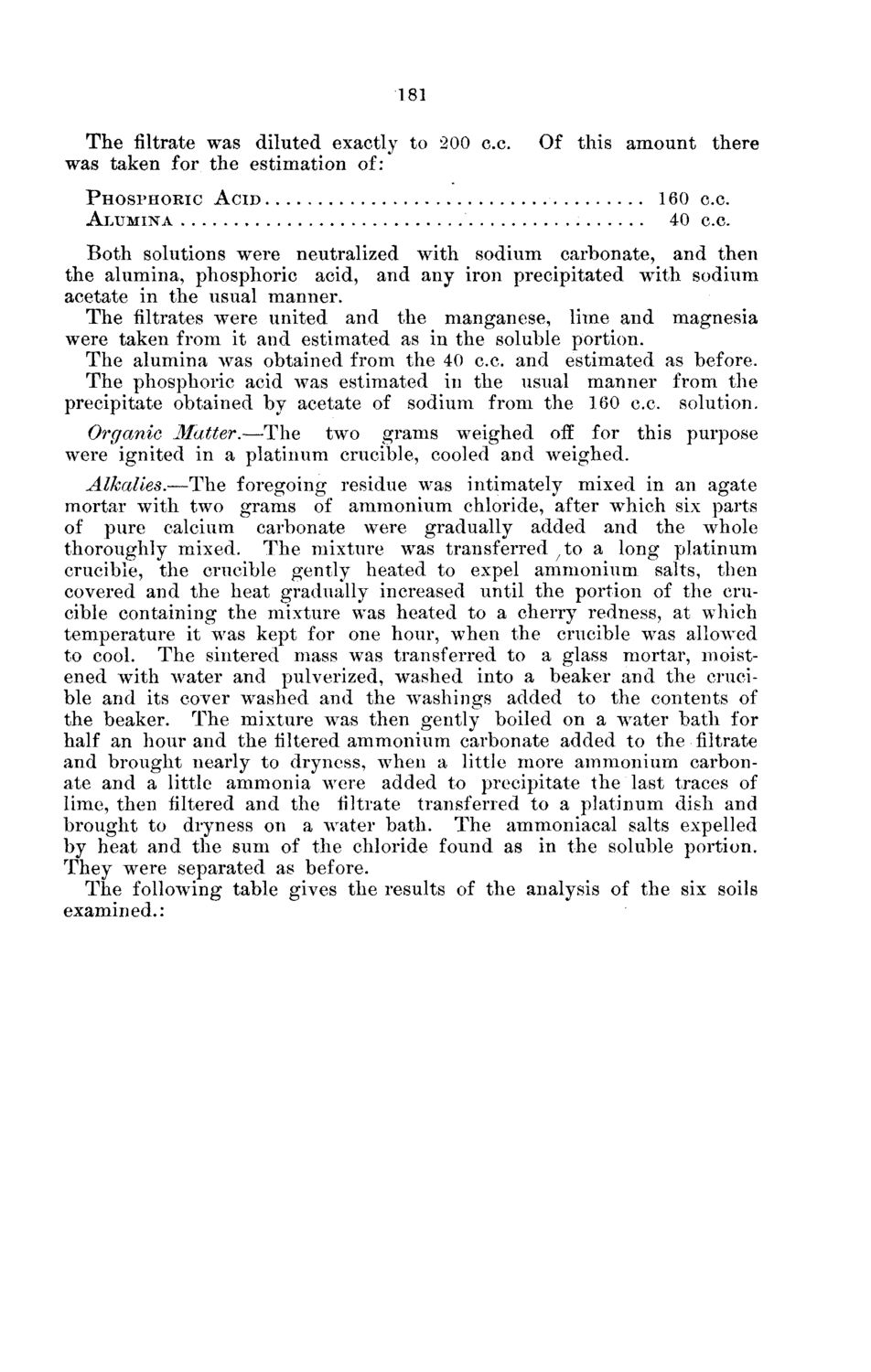| |
| |
Caption: Board of Trustees Minutes - 1878
This is a reduced-resolution page image for fast online browsing.

EXTRACTED TEXT FROM PAGE:
181 The filtrate was diluted exactly to 200 c.c. was taken for the estimation of: PHOSPHORIC ACID ALUMINA Of this amount 160 40 there c.c. c.c. Both solutions were neutralized with sodium carbonate, and then the alumina, phosphoric acid, and any iron precipitated with sodium acetate in the usual manner. The filtrates were united and the manganese, lime and magnesia were taken from it and estimated as in the soluble portion. The alumina was obtained from the 40 c.c. and estimated as before. The phosphoric acid was estimated in the usual manner from the precipitate obtained by acetate of sodium from the 160 c.c. solution. Organic Matter.—The two grams weighed off for this purpose were ignited in a platinum crucible, cooled and weighed. Alkalies.—The foregoing residue was intimately mixed in an agate mortar with two grams of ammonium chloride, after which six parts of pure calcium carbonate were gradually added and the whole thoroughly mixed. The mixture was transferred y to a long platinum crucible, the crucible gently heated to expel ammonium salts, then covered and the heat gradually increased until the portion of the crucible containing the mixture was heated to a cherry redness, at which temperature it was kept for one hour, when the crucible was allowed to cool. The sintered mass was transferred to a glass mortar, moistened with water and pulverized, washed into a beaker and the crucible and its cover washed and the washings added to the contents of the beaker. The mixture was then gently boiled on a water bath for half an hour and the filtered ammonium carbonate added to the filtrate and brought nearly to dryness, when a little more ammonium carbonate and a little ammonia were added to precipitate the last traces of lime, then filtered and the filtrate transferred to a platinum dish and brought to dryness on a water bath. The ammoniacal salts expelled by heat and the sum of the chloride found as in the soluble portion. They were separated as before. The following table gives the results of the analysis of the six soils examined.:
| |